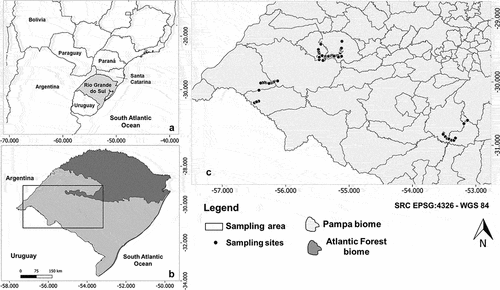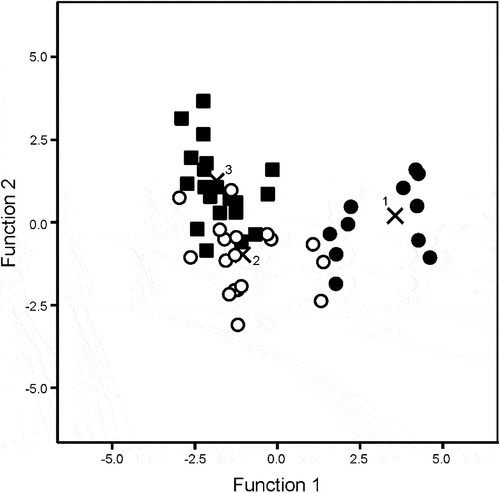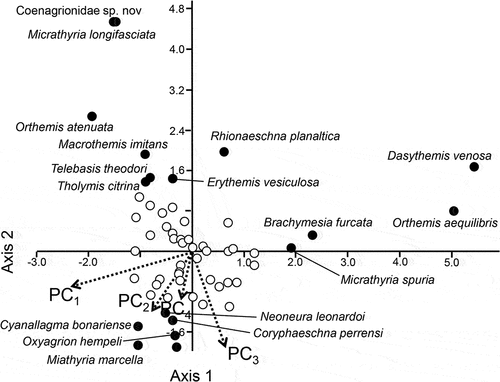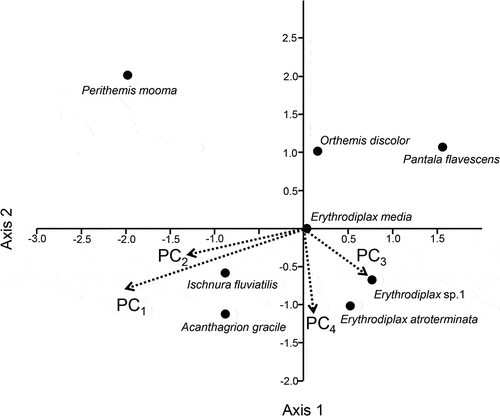Figures & data
Figure 1. Map of Brazil, Rio Grande do Sul state in the south highlighted, with Atlantic forest biome in black and pampa biome in light grey. sampling sites clustered in seven regions, shown as open dots. some sites overlap at this scale. large rivers in white with lagoons shaded.

Figure 2. Discriminant analysis for three groups of common species using the relative abundance, (ln (n + 1) transformed) of the rare species as independent variables. 1 (black circles) = 0–2 common species, 2 (open circles) = 3–5 common species and 3 (black squares) = 6–8 common species at the locality. Group centroids marked as “x”. Several localities appear on top of each other and are not visible in the figure. Localities with only a few common species have a more distinct composition of rare species than localities with a higher number of common species.

Table 1. Results of principal component analysis on environmental variables measured at the collecting sites. Bold digits indicate high eigenvector values
Figure 3. CCA plot based on the relative abundance of rare species and the four principal components. Most common species (empty circles) appear near the centre of the ordination and are only moderately affected by the PCs. A small set of species, e.g. Micrathyria longifasciata, Orthemis aequilibris and Dasythemis venosa are strongly (negatively) affected by PC1 and PC3 while the rest of the rare species (filled circles) are moderately affected.

Figure 4. CCA plot based on the relative abundance of the common species and the four principal components. The small damselflies I. fluviatilis and A. gracile are positively associated with PC1 and 2 while the P. flavescens is negatively associated. Further, two Erythrodiplax species are positively associated with PC3 and 4, with P. tenera (Say, 1839) negatively associated. Erythrodiplax media is not affected by any of the variables corresponding to the PCs.

